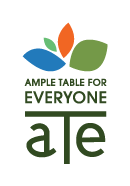Many families have a tough time providing enough nutritional food for their households. Counter to popular myth, about 85% of food-insecure households with children are headed by adults who work, often two or three jobs. However, with the minimum wage at $7.50/hour, they don’t earn enough to avoid food insecurity.
SNAP provides a safety net.
A study by Hoynes, Schanzebach and Almond (2016) found that there were many positive effects of SNAP early in life:
Lower rates of diabetes, high blood pressure, obesity, heart disease.
Women who had access to SNAP early in life showed much higher economic self-sufficiency. It increased high school graduation rates by 18 percentage points and contributed to increased earnings and financial success.
Children’s education outcomes improved.
Participants had more money for other essentials: rent, utilities, healthcare.
In addition, the SNAP program currently allows for purchasing local food and helps the economy. Each dollar in SNAP benefits generates $1.79 in economic activity.
The Farm Bill currently before Congress proposes to revamp SNAP so that half of the benefits would come in the form of a one size fits all food package. The bill hopes to cut the costs of the program by 30%. Joel Berg, CEO of Hunger Free America says “they have managed to propose nearly the impossible, taking over $200 billion worth of food from low-income Americans while increasing bureaucracy and reducing choices.” The proposal would also cut 4 million participants for SNAP.
SNAP is a program without much fraud, waste or abuse. As James Ziliak, Director of the University of Kentucky’s Center for Poverty Research has said, “The evidence shows that the program actually works. Not all programs work. But SNAP is actually one of those programs that does what it is supposed to be doing.”
Instead of revamping a program that is working, we should be strategically thinking long-term. Saving money short-term (which is not guaranteed) is not an offset for the negative consequences of poorer health, education, and economic outcomes.

